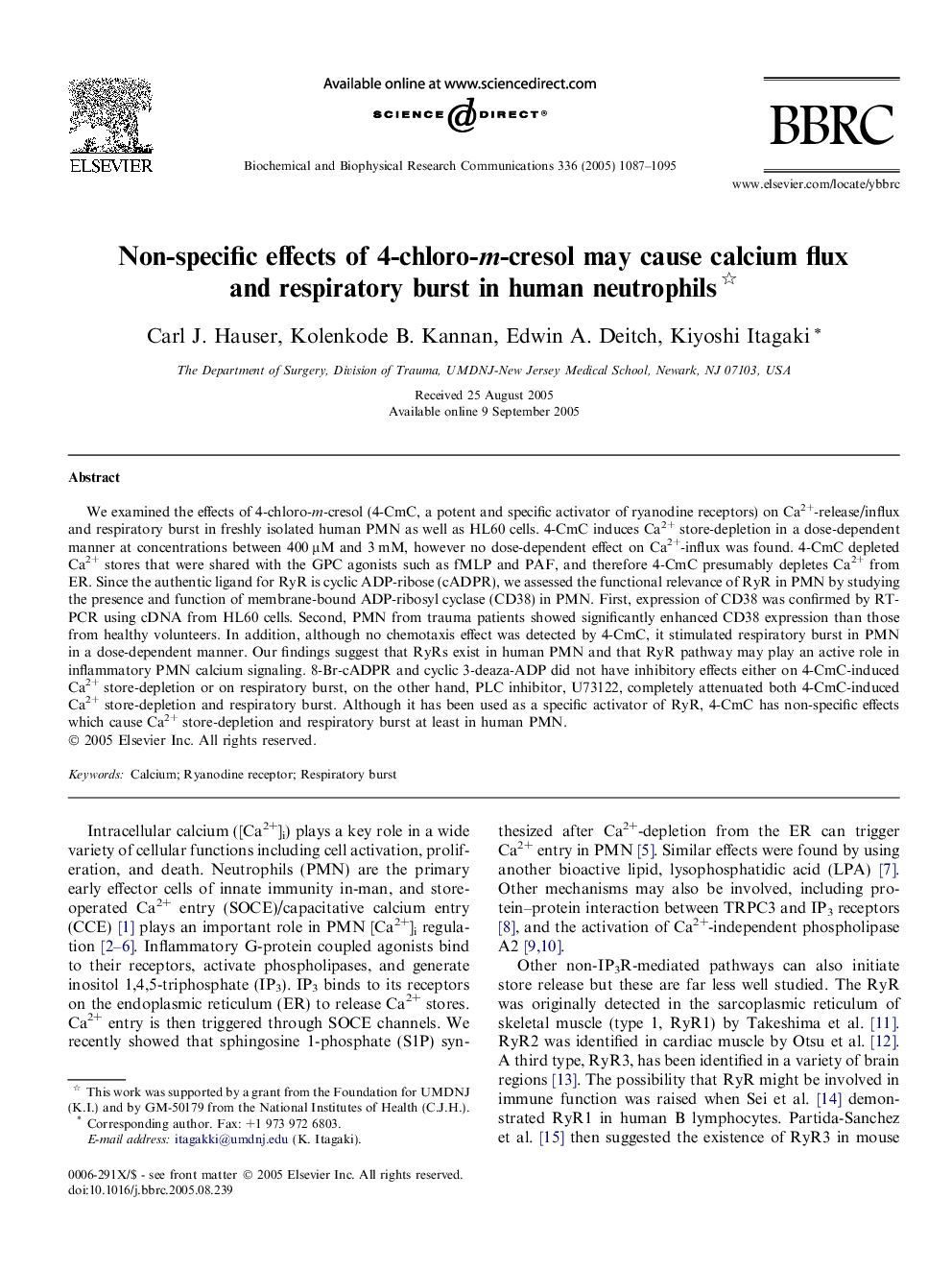| Article ID | Journal | Published Year | Pages | File Type |
|---|---|---|---|---|
| 10767754 | Biochemical and Biophysical Research Communications | 2005 | 9 Pages |
Abstract
We examined the effects of 4-chloro-m-cresol (4-CmC, a potent and specific activator of ryanodine receptors) on Ca2+-release/influx and respiratory burst in freshly isolated human PMN as well as HL60 cells. 4-CmC induces Ca2+ store-depletion in a dose-dependent manner at concentrations between 400 μM and 3 mM, however no dose-dependent effect on Ca2+-influx was found. 4-CmC depleted Ca2+ stores that were shared with the GPC agonists such as fMLP and PAF, and therefore 4-CmC presumably depletes Ca2+ from ER. Since the authentic ligand for RyR is cyclic ADP-ribose (cADPR), we assessed the functional relevance of RyR in PMN by studying the presence and function of membrane-bound ADP-ribosyl cyclase (CD38) in PMN. First, expression of CD38 was confirmed by RT-PCR using cDNA from HL60 cells. Second, PMN from trauma patients showed significantly enhanced CD38 expression than those from healthy volunteers. In addition, although no chemotaxis effect was detected by 4-CmC, it stimulated respiratory burst in PMN in a dose-dependent manner. Our findings suggest that RyRs exist in human PMN and that RyR pathway may play an active role in inflammatory PMN calcium signaling. 8-Br-cADPR and cyclic 3-deaza-ADP did not have inhibitory effects either on 4-CmC-induced Ca2+ store-depletion or on respiratory burst, on the other hand, PLC inhibitor, U73122, completely attenuated both 4-CmC-induced Ca2+ store-depletion and respiratory burst. Although it has been used as a specific activator of RyR, 4-CmC has non-specific effects which cause Ca2+ store-depletion and respiratory burst at least in human PMN.
Related Topics
Life Sciences
Biochemistry, Genetics and Molecular Biology
Biochemistry
Authors
Carl J. Hauser, Kolenkode B. Kannan, Edwin A. Deitch, Kiyoshi Itagaki,
